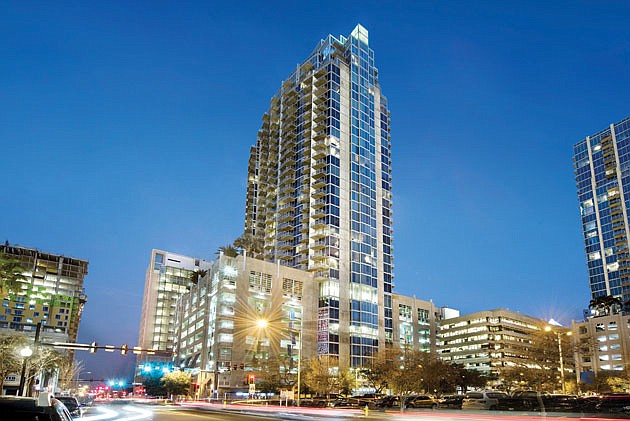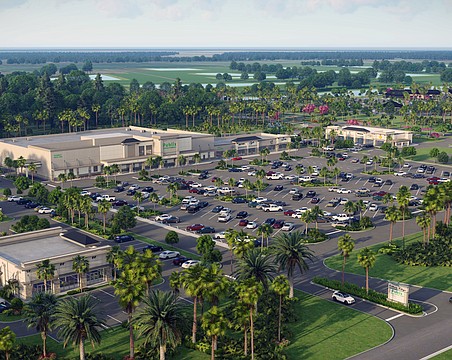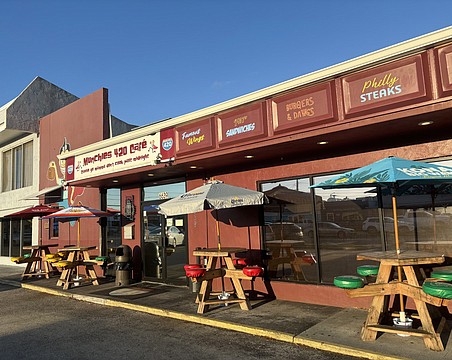Roxanne Amoroso develops apartments for a living, and has put multifamily deals together for the better part of the past two decades.
But she's just as surprised as anyone at how the rental landscape has changed — both from the development side and the customer side — over the past 10 years.
“The profile of the resident has really changed,” Amoroso, a principal in St. Petersburg-based Mosaic Development LLC, told a crowd of more than 500 commercial real estate participants who gathered Jan. 24 in Tampa for an annual Urban Land Institute discussion of “Emerging Trends in Real Estate.”
“What they want from a community today is really different than what was desired 10 years ago,” adds Amoroso, whose firm has developed projects in Fort Myers and Bonita Springs.
Perhaps the biggest change — and greatest surprise — is renter willingness to forego large living spaces in favor of preferred locations and amenity packages.
“Renters today we're finding are much more urban in nature, they desire to live a certain lifestyle, and they're perfectly happy to live in a smaller unit with a lot of amenities provided,” Amoroso says.
She's equally surprised by the elevation in rental rates tenants are wiling to pay for those locations and amenity packages.
“I never thought we'd see $2 per square foot rents, but we're getting it,” she says. “In some tertiary markets, rents are $1,200 a month for a 550-square-foot apartment. People are just living differently these days.”
Just as mystifying is the seemingly constant demand, fueled by an anticipated in-migration of more than 55,000 new residents to the Tampa Bay area slated to occur between 2017 and 2022.
Mosaic Development, for instance, has projects with more than 1,000 new residential rental units in its pipeline, Amoroso says.
She describes the current state of apartment development as “fierce” and “competitive.”
Those words echo how many commercial real estate practitioners feel heading into 2018, according to an annual survey and interviews conducted nationwide by consulting firm PriceWaterhouseCoopers (PwC).
Mitch Roschelle, a PwC partner and the firm's national real estate advisory practice leader, says industry players remain optimistic, but that that emotion has become somewhat tempered as the U.S. economic recovery has edged past 100 consecutive months.
“While people are optimistic, they're a little less optimistic than they were a few years ago,” Roschelle says.
Out of the more than 1,600 online surveys, 600 interviews and focus groups PwC conducted of commercial real estate practitioners, 79.6% rated business as either good or excellent.
That was down from 81.6% who felt the same way in 2016.
He notes, too, that the No. 1 word survey takers used to describe the economic climate for 2018 was “competitive.”
Still, PwC concludes that the U.S. economy, and hence the commercial real estate industry, still has room to grow in this economic cycle.
“What we haven't done here is re-inflate the bubble,” Roschelle says. “There's been little (gross domestic product) growth versus other recoveries. The real estate ecosystem is behaving in a rational fashion, it's very measured.”
Real estate, from a yield perspective, also continues to outperform other financial instruments, such as bonds, which makes the sector more attractive to investors, Roschelle says.
In and around the Tampa area, experts believe expected interest rate hikes will have a corresponding effect on capitalization rates on commercial real estate prices, and that derelict “big box” retail locations — from shuttered Sports Authority to Sam's Club stores — will be repurposed as distribution centers and other uses.
“I think perhaps you'll see some department stores converted into distribution sites,” Bill Eshenbaugh, founder of Tampa-based Eshenbaugh Land Co., told the ULI gathering.
“I think going forward you'll see smaller distribution points, closer to populations, that use smaller vehicles to service them.”
What Eshenbaugh doesn't believe the Tampa area will see anytime soon is a return to rampant office development.
“There's a rent gap that still exists, between what the market is willing to pay for office space and what a developer needs to move forward,” Eshenbaugh says. “But I think that new tenants to this market will eventually drive new development.”
Roschelle contends at least some of those new tenants will come from New York, the result of changes brought about by the recent tax reform law that are expected to hurt relatively high-tax areas like the Empire State.
But despite the general optimism, the ULI panel acknowledges that “disruptors” could cause dark economic clouds to form in the coming months.
Roschelle notes there are now more than 57 million American workers who are classified as “freelancers” who use office space much differently than has traditionally been the case.
At the same time, the up-and-coming Generation Z — the cohort of some 75 million Americans born between the mid-1990s and the mid-2000s — could also disrupt open-space, collaborative workplaces that have gained favor over the past decade, thanks in large part to technology like Facetime and Google Docs.
“The biggest thing we're going to see over the next 10 years or so is that Generation Z is going to want a return to doors and offices,” Roschelle says. “They still want to collaborate, but they want to do it from behind a door. That will eliminate the need for so many conference rooms, and that's a big game changer.”
He also believes the Tampa area's lack of mass transit could stifle growth long term, because cities that thrive tend to share two key attributes: access to employee talent and the ability to limit traffic congestion.
“People don't want to spend a long time in traffic anymore,” Roschelle says.
The retail sector also is ripe for further disruption, panelists say, as online shopping become more and more prevalent.
“The question is how disrupted will we get?” Roschelle says. “Is the problem inside the box or is the problem the box itself? Clearly we're closing more stores than we're opening.”
He notes that while the U.S. has 23.6 square feet of retail space per person, many countries have but a fraction of that figure. Germany, for instance, has just 2.3 square feet per resident.
Housing, too, could be in for a day of reckoning.
“We have a housing shortage and a housing crisis in this country at the same time,” Roschelle says. “And that's amazing, because in any other industry that makes anything, at a time when prices are rising the response is to make more, and that's not happening with housing.”
PwC estimates that up to 3.5 million new households formed in recent years are unable to locate suitable housing.
Eshenbaugh says “there's a lot of nervousness” among Tampa-area homebuilders because adequate land tracts have become scarce, pushing builders to Hernando County, Plant City, Zephyrhills and elsewhere.
Roschelle says the relative lack of new housing makes multifamily development all the more attractive.
But Amoroso says overbuilding has left many in the sector bearish on some locations.
“There are some markets I would not want to build in today because I'm afraid of over-saturation,” she says.






